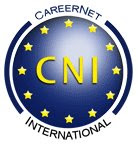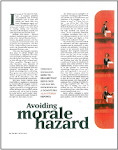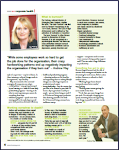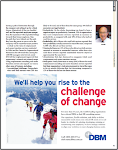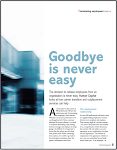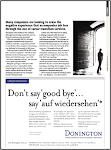Tuesday, September 1, 2009
Currently Under Construction
This site is currently under construction. We apologise for any inconvenience this may cause.
Wednesday, August 26, 2009
Tweeting your way to a new job?
.png)
When searching for a job there are numerous different avenues and resources available especially via the wonderful world wide web. Although did you know that Twitter is vastly becoming the most recent up-to date job search tool available. Twitter can be used to search for jobs being posted, manage connections with others, organise your job search process, monitor and research your job alerts and gain job search feeds.
Twitter was developed in March of 2006 as a means to keep people connected through rudimentary social networking features allowing messages to be accepted via sms, web, mobile web, instant message or third party API projects. If your not convinced then here are some very interesting facts:
- In Australia the annual growth rate for Twitter over the past year has hit 3,200%.
- As of May 2009, Twitter received more than 20 million unique monthly visitors (UMVs)surpassing many mainstream news sites such as The New York Times.
To assist you in your job search we have included a list of helpful links:
To search for jobs being posted visit:
Find tweets about jobs http://www.twitterjobsearch.com/
Search engine http://www.twittertroll.com/
Register for email alerts http://www.tweetscan.com/
Find jobs posted in the last 7 days http://www.twitterjobfinder.com/
Search engine http://www.twittertroll.com/
Register for email alerts http://www.tweetscan.com/
Find jobs posted in the last 7 days http://www.twitterjobfinder.com/
Making new connections:
Find companies you would like to work for http://www.twittermind.com/
Identify leaders to connect with http://www.twellow.com/
Find other users with similar interests http://www.justtweetit.com/
Follow users with similar interests http://www.twollow.com/
Invite people to join you http://www.findpeople.com/
Find recruiters http://www.tweepsearch.com/
Identify leaders to connect with http://www.twellow.com/
Find other users with similar interests http://www.justtweetit.com/
Follow users with similar interests http://www.twollow.com/
Invite people to join you http://www.findpeople.com/
Find recruiters http://www.tweepsearch.com/
Staying organised:
Separate your contact with job listing feeds etc http://www.tweetdesk.com/
Create a schedule http://www.twuffer.com/
Organise your followers and friends http://www.tweepler.com/
Find jobs posted in the last 7 days http://www.twitterjobfinder.com/
Assist you if you have separate accounts http://www.splitweet.com/
Create a schedule http://www.twuffer.com/
Organise your followers and friends http://www.tweepler.com/
Find jobs posted in the last 7 days http://www.twitterjobfinder.com/
Assist you if you have separate accounts http://www.splitweet.com/
Monitor job alerts:
Set up alerts http://www.tweetbeep.com/
Subscribe and get notification of new jobs http://www.teweetmyjobs.com/
Direct messages sent to your account http://www.twitterjobalerts.com/
Learn what’s going on inside companies http://www.connecttweet.com/
Subscribe and get notification of new jobs http://www.teweetmyjobs.com/
Direct messages sent to your account http://www.twitterjobalerts.com/
Learn what’s going on inside companies http://www.connecttweet.com/
How to get your message out there:
Link your resume http://www.visualcv.com/
Simulcast your tweets to Facebook, LinkedIn etc http://www.hellotxt.com/
Simulcast your tweets to Facebook, LinkedIn etc http://www.hellotxt.com/
Direct line to job posts:
Latest featured jobs www.twitter.com/elance_jobs
Freelance jobs www.twitter.com/freelance_jobs
HR jobs www.twitter.com/HRCrossing
Teen jobs www.twitter.com/myfirstpaycheck
Twitter search engine www.twitter.com/twitjobsearch
Retail jobs www.twitter.com/newretailjobs
Job sites www.twitter.com/indeed
Freelance jobs www.twitter.com/freelance_jobs
HR jobs www.twitter.com/HRCrossing
Teen jobs www.twitter.com/myfirstpaycheck
Twitter search engine www.twitter.com/twitjobsearch
Retail jobs www.twitter.com/newretailjobs
Job sites www.twitter.com/indeed
Tuesday, August 18, 2009
It is time to refresh your Resume!
.png) Although there are many speculations surrounding the economy and job market it is important to consider all aspects including the existence of little to no job security. Therefore making sure that your resume is up-to-date and appealing could begin to pay big dividends for you in 2009.
Although there are many speculations surrounding the economy and job market it is important to consider all aspects including the existence of little to no job security. Therefore making sure that your resume is up-to-date and appealing could begin to pay big dividends for you in 2009.Updating your resume when you already have a job may seem to be tedious and unnecessary. It is, however, it is important to consider unforseen future opportunities which may present themselves and in order to be ready an up to date resume is a Must!
Tips on how to refresh your resume
1. Begin with a descriptive Headline to communicate your career target E.g. Marketing
Executive backed by corporate management experience. This headline needs to demonstrate
your breadth and depth of experience. Remember to keep this short and simple disclosing your
top selling points.
2. Avoid ‘one size fits all’ resumes, you need to be specific with your career and industries. It is
important to have a clearly defined goal as a specific detailed resume will be more successful
over a general and basic resume.
3. Research! The more you research the easier it will be to write your goals/objectives, align
your qualifications with what employers are seeking, upload your transferrable skills and
experience which will enable you to succeed in positioning yourself relative to your target
sector. E.g. “Award winning business coach seeking to leverage six years training experience
to transition into corporate team management.”
4. Make sure that you update your accomplishments, even if you are still in the same job you
almost certainly will have many skill/achievement additions to update. If you have had a job
change, a promotion or increased responsibilities it is imperative you mention these in your
resume.
5. If you have undertaken and completed self development initiatives include these in your resume. These may take the form of certificates, online courses, degrees, training, TAFE and these show your commitment to continual learning and advancement.
6. Industry jargon and technology are continually advancing therefore your resume should be up to date with these keywords. This includes computer programs and software. A good way to familiarise yourself with these keywords is to scan job postings on job search engine websites.
7. You don’t want a resume the size of a book neither would your employer. Consider what is useful and what may be irrelevant. A hint would be to decrease the amount of information provided for older experience unless you are looking to return to a former career. It may be advantageous to set up an earlier career section which could summarise previous roles, employers and employment dates. Additionally you may want to decrease your information on your schooling history once you have progressed to achieve a college degree.
8. Proofread your resume and see if you can get a third party to read though your resume and provide you with feedback. Note: if you have been going through your resume and making changes it may be best to take a break of about half an hour to become refreshed and then go back to proofread it.
9. Create a file to store future achievements, performance reviews, committees joined, targets achieved including quantifiable results, certificates and any completed forms of study. This will be a great help when it is time to refresh your resume in the future!
10. Don’t forget about your resume once it has been updated; make a point to refresh your resume throughout the year as you never know what lies ahead.
Good Luck!
Monday, July 20, 2009
Your personal brand
.png) A personal brand is unique to each individual and reflects the notion that success comes from self-packaging. Personal branding often involves the application of one's name to various products. But how does this work for job seekers? Well you are your own personal brand which must be vigorously promoted! This can be achieved through the creation of profiles on social networking sites such as MySpace, Facebook or Linked In or creating your own promotional website using your name as the domain name.
A personal brand is unique to each individual and reflects the notion that success comes from self-packaging. Personal branding often involves the application of one's name to various products. But how does this work for job seekers? Well you are your own personal brand which must be vigorously promoted! This can be achieved through the creation of profiles on social networking sites such as MySpace, Facebook or Linked In or creating your own promotional website using your name as the domain name. So why is it important?
No matter your status within the business world personal branding is absolutely vital to your success. After all, an abundant number of others may have your job title, but only a few might share your vision and appreciate the particular talents you offer. If you connect with the individuals and companies that value your “mission” in the world, you will have a much greater chance for success. There is no full-proof path for building a personal brand, but you can take steps that will help you create the best personal brand for you.
A personal brand is a holistic look at your goals, passions and values and how those work to enhance what you offer. Your personal brand relies on the reputation you are able to build around its unique promise of value and in turn what you ultimately deliver. As a result, authenticity and honesty become the most significant building blocks for your personal brand.
It is important to remember that the information you post or upload is publically representing yourself and many employers and recruiters research prospective candidates online to receive more information before an interview or offer is extended.
Our top 5 sourced tips to building a successful plan:
1. First, you need to create a branding plan for yourself. Start by evaluating what your current reputation is and compare it to what you’d like it to be. Then identify qualities that make you unique and how they might be valued by an employer. Helpful hint: Examining who or what you don’t want your personal brand to be like can reveal what you do want. Just flip these negative qualities around to find the positive.
2. While you’re brainstorming your personal brand, it is helpful to write everything down. You will want to create a statement that encapsulates everything you want your brand to be. This will be your “personal mission statement.”
3. Once you’ve worked on your brand identity, you need to get input from those around you. Build your own “board of directors” (i.e., mentors, peers, and family) to give you feedback on your branding plan and how you are putting it into action. Branding is ultimately about communicating your identity; thus it is crucial that you know how it is being received by others.
4. The more you are able to distinguish your brand, the more you potentially will be able to find someone to pay you for it. Look at the market and find what it is that you offer better than anyone else. Read the news, websites, newsletters, etc. and find out what the status quo is so you can capitalise on what makes you special.
5. Go to a good search site and enter keywords related to your brand identity. Check out how those sites embody the qualities of your own brand. Note the ways that these sites present themselves and think about how you might do the same for your own brand online.
Remember your personal brand in the workplace is a combination of the product you offer (i.e., your job performance), the values that you embody, and how the two work together to create the “package” that is you.
Friday, July 17, 2009
Looks Matter
 Most if not all of us are aware that the way you look when attending an interview contributes to the overall perception of your fit with the company and the role. In support Senior Manager, Megan Alexander states that job interviews are only 50% about technical skills and the other 50% is about whether you fit the company; whether you share the company’s culture, whether you’ll be comfortable in the company’s culture and the way you look will immediately create an impression about whether or not you will fit the organisation.
Most if not all of us are aware that the way you look when attending an interview contributes to the overall perception of your fit with the company and the role. In support Senior Manager, Megan Alexander states that job interviews are only 50% about technical skills and the other 50% is about whether you fit the company; whether you share the company’s culture, whether you’ll be comfortable in the company’s culture and the way you look will immediately create an impression about whether or not you will fit the organisation.This may seem superficial to some but in essence it is the reality that appearance counts when making a first impression. Bradley Richardson a contributing writer for Monster states that you are more likely to command respect and get what you want if you're dressed appropriately for your surroundings and it is important to remember that it is very difficult to overcome a poor first impression, regardless of your knowledge or expertise.
Many applicants may become overwhelmed with differing opinions on ‘how to dress to impress’ so we have put together a simple guideline to help you break through the clutter.
1. Do some research on the organisations culture so you can dress appropriately. If the industry is more formal than your current industry, dress accordingly. If you your suit is too big, long in the legs or arms or doesn’t button up it’s time to get a decent suit, go out and buy one, it will be worth it. Wearing higher quality clothes shows that you are willing to invest in your career and future.
2. If you are unsure dress on the conservative side as it is the safe option. Most employers approve of suits. An interviewer is more likely to accept that you can dress down if the environment is more casual than that you will dress more conservatively once you are employed.
3. Keep makeup and hair simple and classic, you don’t want either of these elements to become distracting for the employer. For example if you are constantly pushing hair off your face this will become distracting and irritating for the interviewer!
4. Nails are important so make sure you keep them clean and neatly manicured. Avoid bright coloured nail polish and nail art. Your hands are clearly on view so make sure they send the right message about you.
5. It is recommended that women wear closed-toed shoes and avoid backless shoes and open-toed shoes as they can look too casual. It is important to clean and polish your shoes as run-down shoes ruin an outfit and give the impression that the candidate is careless and does not pay attention to detail. It is imperative that you can walk comfortably and confidently in your shoes, especially if you are going on a workplace tour.
6. Avoid leather or denim as it is not considered professional and can carry negative perceptions. Avoid wearing leather jackets or skirts. Never wear jeans or denim jackets. Shiny, satin-like fabrics are generally inappropriate for smart business wear.
7. You want the interviewer to focus on what you are saying during the job interview. Avoid low necklines, flashy ties, lots of jewellery around your neck, big dangly earrings or over-the-top hairstyles. Make sure that your cologne or perfume is subtle and not too strong as this can also become distracting for the employer.
8. Try your outfit on a couple of days before and make sure your outfit is clean, well pressed and not in any need of repair. You don't want to spend the interview tugging down a too tight or too short skirt! Keep in mind your commute to the interview and try to avoid wearing clothes that wrinkle easily if you have some distance to travel.
9. Maintain a level of professionalism, this means no piercings, no chewing gum or candy and cover up any tattoos or piercings as much as possible. Baggy clothes look messy and tight clothes look as though you are drawing attention to your looks rather than your skills! Remember keep it simple and smart!
Making sure that you are appropriately dressed for the interview will give you an immediate competitive edge right from the start.
Bradley Richardson’s list of things to remember:
• Appearances do matter!
• Don't underestimate the power of a first impression. People make assumptions about you
based upon your appearance at your first meeting.
• You are more likely to receive better service, command more respect and get what you want if
you are dressed and speak appropriately for your surroundings.
• Your appearance should be consistent with your message.
• Your appearance should be consistent with your message.
To get more advice on making a successful career transition contact us via email at admin.qld@donington.com.au or call us on 07 3838 1388
Tuesday, July 14, 2009
Immigration Update - Subclass 457 Visa
.png) Many employers are in search of alternative employment arrangements for their employees as a result of the current economic climate. However employers must be aware that there are special considerations for employees that hold a Subclass 457 visa.
Many employers are in search of alternative employment arrangements for their employees as a result of the current economic climate. However employers must be aware that there are special considerations for employees that hold a Subclass 457 visa.There are two important categories to be familiar with; employee working conditions and minimum salary levels. Please see below for further information regarding these issues.
Working Conditions
All Subclass 457 visa holders must work a minimum of 38 hours per week; lesser hours are not accepted and may be considered a breach of the visa conditions. There may be exceptional cases, however anything less than 30 hours a week is prohibited. Thus it is improbable that part-time or casual employees on a Subclass 457 visas are likely to meet this requirement.
Salary Levels
The Department of Immigration and Citizenship (DICA) introduced as of July 1 a new minimum level salary for Subclass 457 visa holding employees. The new salary levels effectively amount to an increase of 4.1%. It is important to note that the new salary levels do not include additional benefits such as superannuation, LAFHA, travel allowances and/or bonuses.
The minimum salary levels are calculated on the basis of a 38 hour working week with the payments being made on a weekly, fortnightly or monthly basis. If the employee/s works in excess of 28 hours per week they must be remunerated proportionately for their additional hours of workload.
Salary Reductions
An employee’s base salary cannot fall below the minimum salary levels set by the DIAC. The employee may still be required to notify the DICA of reductions in salary levels depending on the circumstances of each case.
For more information on the minimum salary levels and occupations for the temporary business long stay visa notice 2009/2 please click the link below:
http://www.immi.gov.au/skilled/skilled-workers/sbs/occupations.pdf
New Role
If the employee is changing into a new role which is similar and requires an equivalent or similar skill set as their previous role the employee may be able to transition into the new role without notifying the DIAC. However, if the role is changing specifically, notification to the DIAC may be required and may result in a new Subclass visa being issued to the employee for their new role.
If the employee is changing into a new role which is similar and requires an equivalent or similar skill set as their previous role the employee may be able to transition into the new role without notifying the DIAC. However, if the role is changing specifically, notification to the DIAC may be required and may result in a new Subclass visa being issued to the employee for their new role.
Sending employees on local or overseas secondments
This is permitted as long as employers continue to meet their obligations as a business sponsor and the employee continues to be treated as an employee of the business. There are no time limits on local secondments however overseas secondment cannot exceed 3 months.
Employee absence or unpaid leave
Once an employee had been employed for at least 12 months, a leave of absence or unpaid leave of up to four weeks is permitted.
If a holiday (including personal annual leave) outside Australia is to be taken, a period of no more than three months is deemed acceptable.
It is important to note that the minimum base salary requirements relative to the employee must be met at all times.
Redundancy/termination obligations
The DIAC must be notified within 5 working days of the employees last date of employment.
The DIAC must be notified within 5 working days of the employees last date of employment.
The employee will then have 28 days to:
i. Apply for another visa –e.g. a new subclass 457 visa through a different employer or a tourist visa.
Or
ii. Depart Australia
It is not an immediate obligation of the employer to offer return airfares and the DICA acknowledges this is a matter of negotiation between the employee and the employer.
Baker & McKenzie released an update on these issues along with changes to retirement for Subclass 410 Visa holders and visa options for same sex partners. To obtain a copy of their July 2009 issue please email admin.qld@donington.com.au or call us direct on 07 3838 1388.
To contact the Department of Immigration and Citizenship head to their website at:
Friday, July 10, 2009
Do you know your career profile?
 Often the way we plan and see our careers unfolding is heavily influenced by our parents, teachers, the media and other social influences.
Often the way we plan and see our careers unfolding is heavily influenced by our parents, teachers, the media and other social influences.Just as often many people find themselves dissatisfied with their careers or having difficulty explaining why what might appear to be a ‘patchy’ CV’ is actually a positive.
What many people don’t realise is that there are different types of careers which can be depicted as differing patterns of movement within and between fields of work over time. This reflects the fact that some people like to move around a lot during their careers, while others prefer to stay put and specialize in a particular kind of work. Some people want to move up a ladder; others prefer to move in more of a lateral direction to expand their capabilities, or simply to experience different kinds of work.
A career assessment profile report can help you identify different career types and provide an analysis of your personal career concept and career motives.
There are many different assessment profiles to choose from and they will vary depending on the company or the report. We recommend the Career View Profile Report which provides you with two profiles; a career motives profile which best indicates the type of career you would find most gratifying personally and a career concepts profile which indicates what you believe you should be doing with your career. However as mentioned previously how we ‘believe’ our career should play out is highly influenced by other people in our lives and may not represent what would be best for us as unique individuals. Thus the motives profile is usually a better window into your own unique motives and desires, relatively free of the influence of other people.
A Career View Assessment profile report is advantageous for not only providing you with direction and understanding about your career motives but also for your own internal career management.
At Donington as a part of our career management and transition services we can facilitate the debrief of a Career View profile for individuals in your organisation to assist in guiding their internal or external career management.
If you would like to know more about assessing your career motives and career concept contact Donington on 07 3838 1388 and ask to speak to Melinda Forsythe or email melinda.forsythe@donington.com.au.
* Please note that this service is available only to residents in Queensland.
Subscribe to:
Posts (Atom)






.png)
